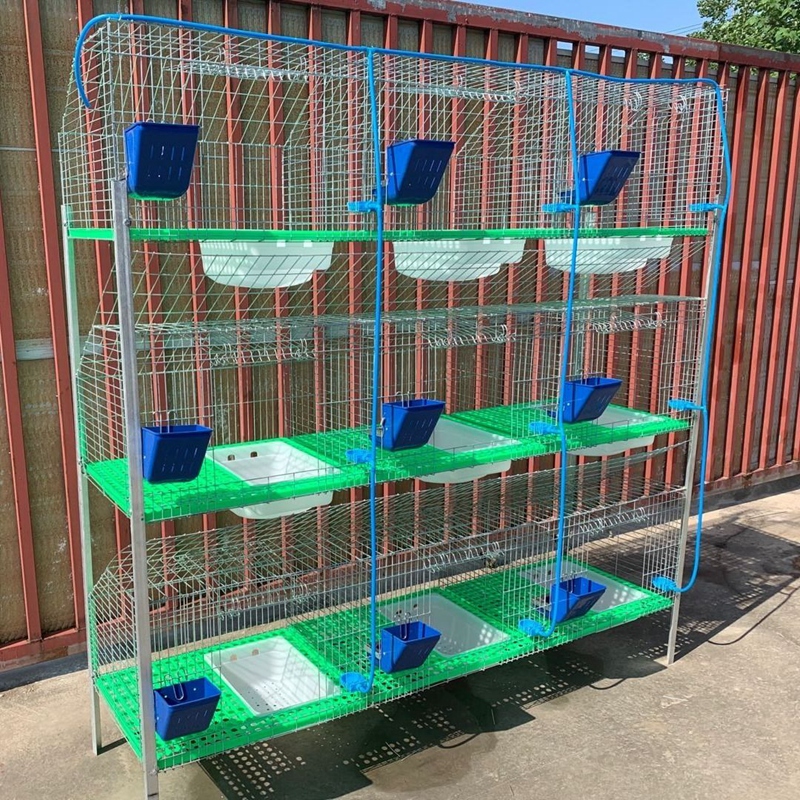layer chicken cages
Dec . 26, 2024 07:59 Back to list
layer chicken cages
Layer Chicken Cages An Overview of Their Importance and Benefits
In the modern poultry industry, layer chicken cages play a crucial role in optimizing egg production. As the demand for eggs continues to rise worldwide, efficient farming methods become necessary to meet this need sustainably. Layer chicken cages are specially designed structures that house hens primarily for egg-laying purposes, and they come with a myriad of advantages that benefit both the birds and the farmers.
What are Layer Chicken Cages?
Layer chicken cages are typically multi-tiered housing systems that allow for the vertical stacking of cages. Each cage is designed to accommodate a certain number of hens, providing them with sufficient space to move, eat, drink, and lay eggs. These cages can be made from various materials, predominantly galvanized steel, to ensure durability and ease of cleaning. They are also equipped with automatic feeding and watering systems that facilitate daily care and reduce labor costs.
Advantages of Layer Chicken Cages
1. Space Efficiency Layer chicken cages maximize space utilization in a farm setting. By utilizing vertical space, farmers can house a larger number of hens compared to traditional floor systems. This efficient use of space is particularly important in areas where land is limited and expensive.
2. Increased Biosecurity Cages help minimize the risk of disease by isolating individual birds. In a cage environment, the close quarters of hens can be easily monitored, making it simpler to identify and manage health issues. This arrangement lessens the possibility of disease spread, which can have devastating effects on poultry operations.
3. Hygiene and Cleanliness Unlike deep litter systems, which require regular cleaning and maintenance, layer cages allow for better management of waste. Manure can be easily removed from beneath the cages, and because the birds are elevated, litter does not come into direct contact with them. This separation significantly reduces the risk of contamination and fosters a healthier environment for the hens.
layer chicken cages

4. Improved Egg Production Hens kept in layer cages tend to demonstrate higher egg production rates compared to free-range or barn systems. The controlled environment and reduced stress levels lead to efficient laying behaviors, allowing farmers to achieve better yields. Additionally, the design of the cages encourages the hens to return to their designated laying areas, ensuring a higher number of eggs are collected.
5. Ease of Management Layer chicken cages streamline the process of managing a flock. Farmers can easily monitor each bird’s health and behavior, conduct routine checks, and implement vaccinations without the need for extensive handling. This ease of management translates into reduced labor costs and increased productivity.
6. Reduced Feed Waste Caging systems often come with feeding troughs designed to minimize feed spillage. Better feed utilization leads to lower feed costs per egg produced, making the operation more economically viable.
Considerations and Welfare
While layer chicken cages provide numerous benefits, they have been met with criticism concerning animal welfare. Concerns arise from the confined spaces that some systems impose on the hens. To address these issues, many farms are moving towards enriched cages that offer more space and enrichment activities, such as perches and nesting areas. These enhancements aim to provide a more stimulating and natural environment, allowing hens to express their innate behaviors while still enjoying the advantages of cage systems.
Conclusion
Layer chicken cages represent a significant advancement in poultry farming, offering efficiency and productivity that can help meet the growing global demand for eggs. By ensuring optimal living conditions and allowing for systematic management, layer cages play a vital role in the modern agricultural landscape. As awareness of animal welfare continues to evolve, the industry must find a balance between productivity and humane treatment, ultimately leading to a more sustainable future for poultry farming and the welfare of hens.
-
Hot Sale 24 & 18 Door Rabbit Cages - Premium Breeding Solutions
NewsJul.25,2025
-
Automatic Feeding Line System Pan Feeder Nipple Drinker - Anping County Yize Metal Products Co., Ltd.
NewsJul.21,2025
-
Automatic Feeding Line System Pan Feeder Nipple Drinker - Anping County Yize Metal Products Co., Ltd.
NewsJul.21,2025
-
Automatic Feeding Line System - Anping Yize | Precision & Nipple
NewsJul.21,2025
-
Automatic Feeding Line System - Anping Yize | Precision & Nipple
NewsJul.21,2025
-
Automatic Feeding Line System-Anping County Yize Metal Products Co., Ltd.|Efficient Feed Distribution&Customized Animal Farming Solutions
NewsJul.21,2025






